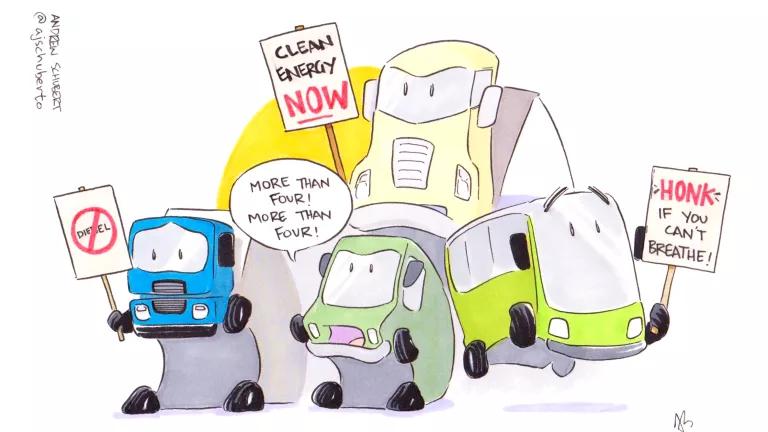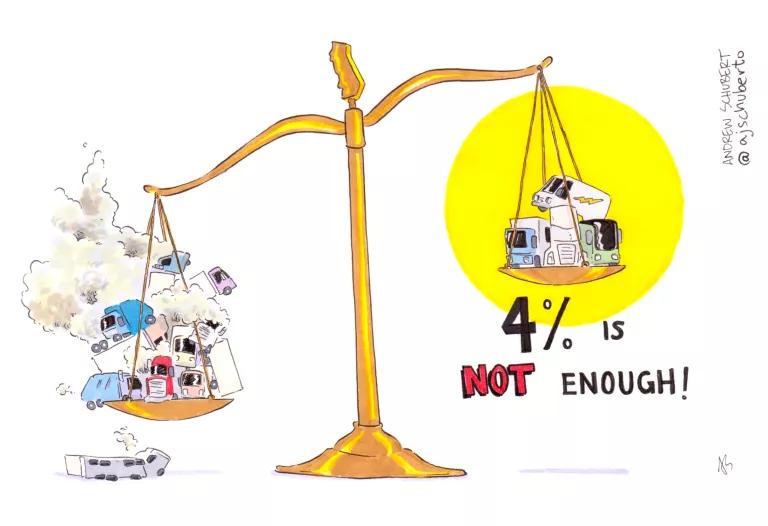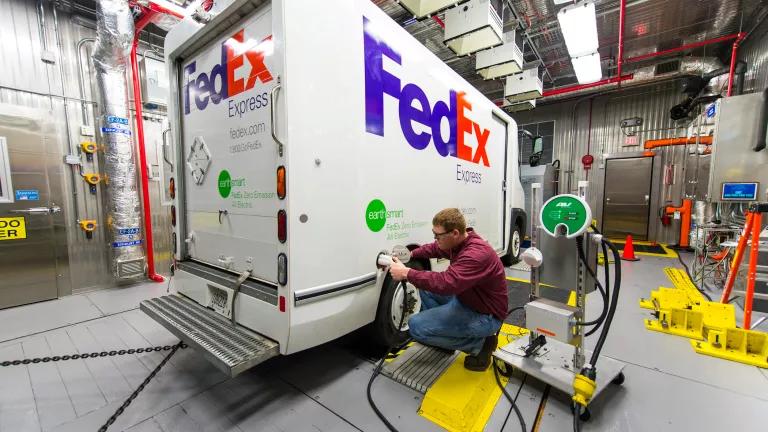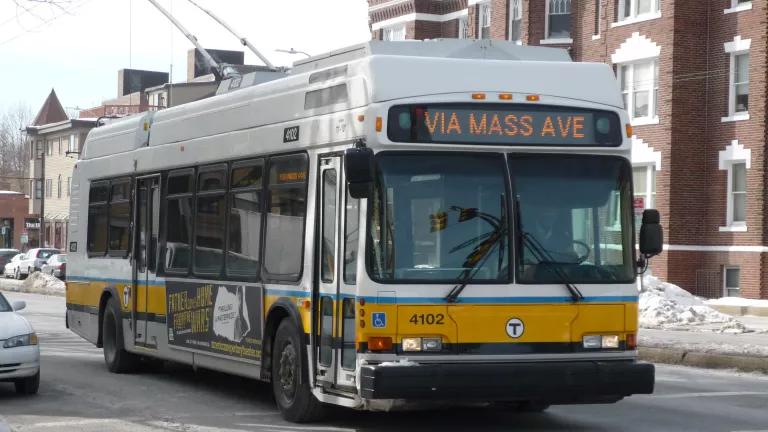Electrifying Trucks Would Save Lives and Grow the Economy

Artist: Andrew Schubert, Instagram
California’s newly proposed Advanced Clean Truck Rule is big. $11 billion in potential economic and public health savings big. But is it big enough to save lives and help the state reach its climate action goals?
At the tail-end of October, the California Air Resources Board proposed the Advanced Clean Truck Rule that requires truck manufacturers sell zero-emission electric trucks as an increasing percentage of their California sales from 2024 to 2030. The rule also asks large fleets and facilities to report information about truck operations to inform a future “fleet rule” that ensures electric trucks are purchased and used.
This rule is the first of its kind in the world and again demonstrates California’s leadership when it comes to protecting our health and the environment. But it can and should be stronger.
Unfortunately, the current proposal would only convert about 4 percent of California’s trucks to electric by 2030. That’s a big problem since the vast majority of commercial trucks burn diesel fuel and emit harmful air pollution.

Artist: Andrew Schubert, Instagram
Initially imagined as a rule for just delivery vehicles, the state regulators developing the rule realized that electric truck technology was progressing so rapidly that they could expand the rule beyond delivery vans to all truck classes.
It also became increasingly clear that air pollution from transportation, and trucks specifically, was worsening. A recent report found that over 90 percent of Californians now live in places that experience unhealthy air at some time during the year. And diesel-burning trucks are a major part of the problem.
In California, trucks are the largest source of NOx, a pollutant that can lead to smog and harmful particulate matter formation. Diesel exhaust alone contains over 40 known carcinogens, making it responsible for about 70 percent of cancer risk related to air toxins in the state. On top of that, trucks and cars are now the number one source of greenhouse gas emissions in the state.
According to the US EPA, exposure to particulate matter, even for a short period, can increase the chances of death. That’s unacceptable. If affordable, proven technology exists today that would limit this risk, then it was needed on our roads yesterday.
Moreover, electric trucks are a smart business decision. The considerable operational savings from fueling with lower-priced electricity and an estimated 25 percent discount on maintenance has attracted huge investments from household names like Coca Cola and Amazon. And truck manufacturers are responding. There are now over a dozen manufacturers offering more than 50 different electric truck and bus configurations.
Strong action from the market and the life-or-death need to clean up California’s air are a sharp contrast to a soft rule that does little beyond business as usual.
Fortunately, it’s not too late to change the rule.
There are four ways to improve the rule:
- Make it stronger. Instead of 4 percent, the rule should target making 15 percent of all California trucks electric by 2030. A more aggressive target will push the market forward and better reflects the latest developments in electric vehicle technology.
- Make all truck types comply with the rule beginning in 2024. Currently, medium-duty pick-up trucks are excluded from the rule until 2027. This means fewer options for consumers since manufacturers aren’t required to produce electric pick-up trucks until 2027.
- Identify when the Air Resources Board's stated goal of zeroing out emissions from trucks should be accomplished. Right now, California lacks a long-term vision for its trucks. Without knowing when that goal should be accomplished, how can we be sure this rule is will help us get there?
- Speed up the truck “fleet rule.” A complimentary policy the state is working on is a fleet rule to promote electric truck purchases, therefore helping electric truck demand meet supply. However, the timeline for the fleet rule is slower. It should be expedited and implemented in 2024.
We’re currently in the 45-day “Public Comment” period which means that anyone and everyone can submit comments to the California Air Resources Board asking them to adopt a stronger Advanced Clean Truck Rule. A quick and simple way to submit comments is through NRDC’s action alert here. Or, you can send your own email to actruckcomment@arb.ca.gov.



